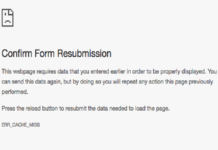There are a lot of quality factors that come into account when ranking for search engines. This process is known as search engine optimization. However, there are some factors that matter more than others. You may not have the best grammar in your content but if your content is plagiarized, chances are you are going to be penalized. A few grammatical mistakes don’t make that much of a difference. So what are these factors you should give the most importance to? Well, keyword density is one of them. You can always check keyword density on keyword density checker for free before publishing the blog so you can avoid keyword stuffing.
Understanding keyword density
Before we learn about keyword density, it is important to understand what a keyword is first of all. When you make a Google search, you use certain words to communicate to Google what exactly you are looking for. If you want to search for images of cats, you will use the word cat. If you want tips on healthcare, you can search that. Google does not have artificial intelligence, how does it know what content to rank for cats and what content to show for health? How does it differentiate?
Google and keywords
Google uses different quality factors for this. And one of them is keyword density. So when words related to healthcare repeat in a certain, it tells Google that the content is relevant to your keyword and that is how it shows the content. But Google also has a requirement for the total number of times the main keyword can be repeated in a blog post. Few years earlier, it was different. If you wanted to make a Google search and you saw content in results, Google considered content with higher keyword density better.
Today, things have changed. Since it became a black hat SEO technique to increase keyword density to rank for content, it has been shown that content that has very high keyword density is actually content that is spam. You don’t want to be part of that lot. On the other hand, you don’t want to decrease your keyword density too much either. This way, your content does not constitute as relevant for Google.
How to optimize your content for keyword density?
The first thing to do is to make sure you are using the right keyword. You need to know what keywords you are going to be optimizing your content for. It is really a trouble going back to the content and then optimizing it for another keyword. Make sure you start with a strong keyword research foundation.
The next step is to create a style where you know you are using your keyword only the required number of times. The optimum keyword density that is recommended today is between 2 and 3 percent. This means that for every 100 words you will write, you will need to repeat your keyword 2 to 3 times. That is the ratio.
Another thing that is a must is to make sure you have a keyword density checker. Without a keyword density checker, there is only luck that determines if your content is optimized for certain keywords. Once you are doing creating the content, copy and paste it on to the keyword density checker and see how it is doing.
LSD keywords
Google will not just determine if your content is related to cats just by looking at the word cats. There are a lot of other factors that go into determining the relevance of content. One of them is LSD keywords. LSD keywords are keywords that are related to the main keyword of a blog post. This helps Google in determining how related a content is. So in this case with cats, you can use keywords like pets, fluffy, hairy and words that are related to cats to optimize your content for search engines. Make sure that you understand how important it is that you create content that is optimized for search engines. Otherwise, it will be a trouble ranking.































